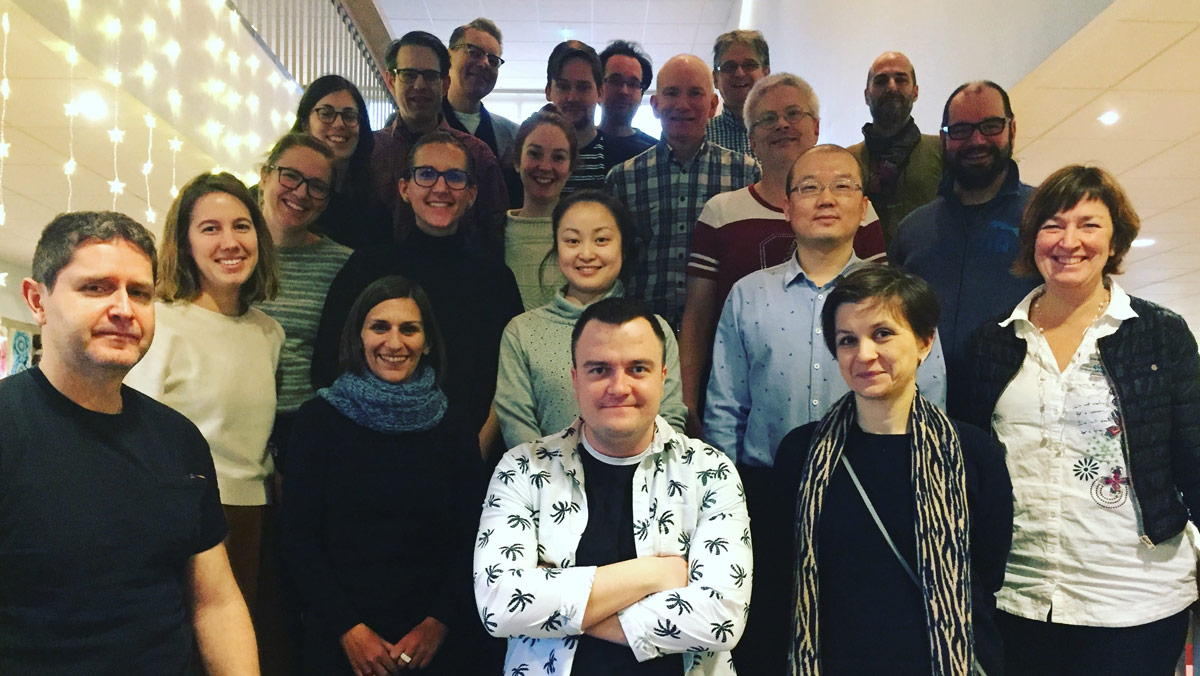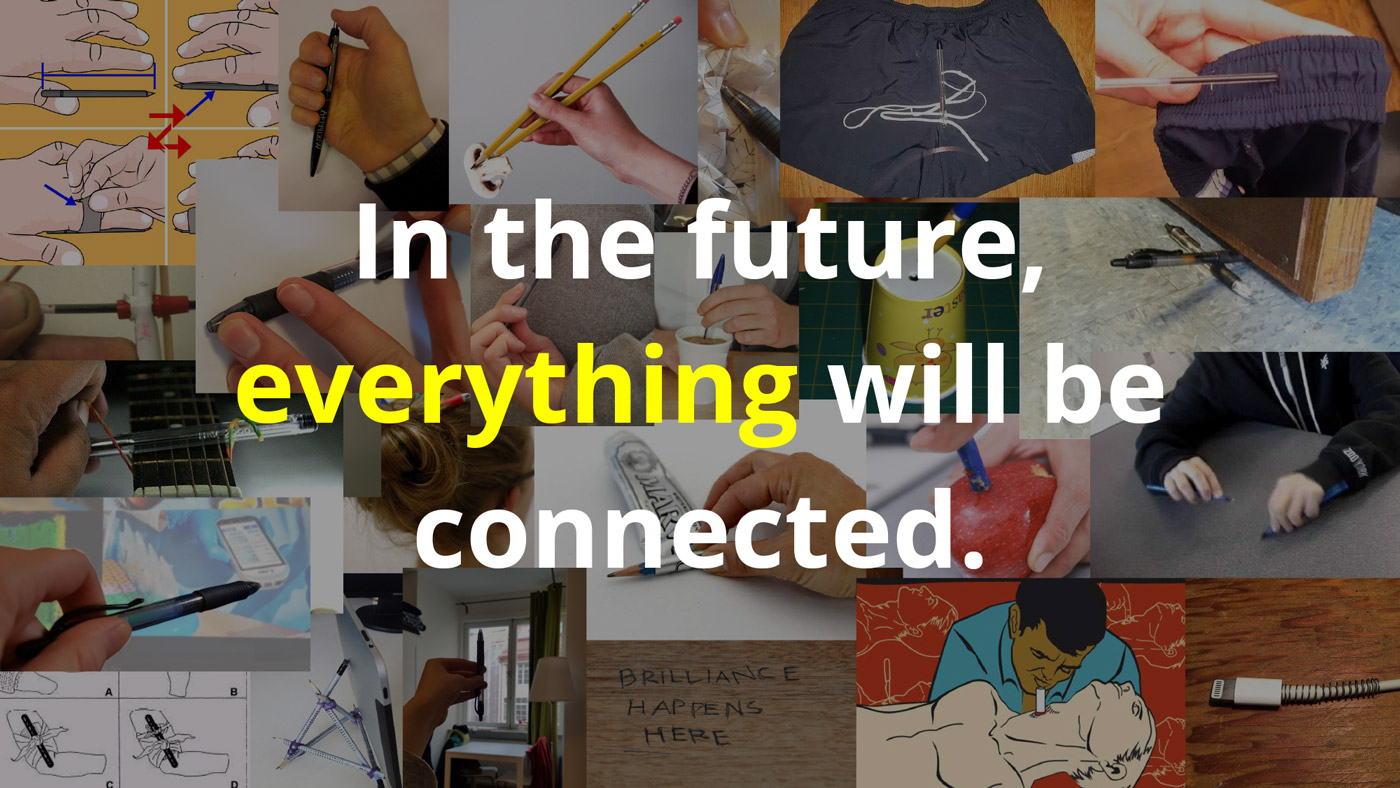Category: Teaching
Design Briefs – Spying on Loved Ones & Tangible Designs for Effort, Exertion, and Exhaustion
For this year’s Advanced Project Course in Interaction Design at KTH, I’m fortunate and excited to have two groups of second-year master’s students working with me on two project briefs – Spying on Loved Ones and Tangible Designs for Effort, Exertion, and Exhaustion during Outdoor Experiences. Excited to see their resulting design work in December!
Spying on Loved Ones
To spy on someone is commonly thought of as a negative or harmful act during which one person secretly observes or collects information on another for malicious purposes. Yet, we also “spy” for many positive reasons. For example, these might include watching a sleeping child through a baby monitor, checking a partner’s calendar to plan a surprise birthday party, or browsing the fridge of an elderly parent to ensure a healthy diet is being consumed. What these examples have in common is that they are acts of care. This projects investigates how we care for others through technology, both with technologies explicitly designed to survey or observe others and through technologies designed for other purposes yet leak implicit information that enables spying. Within this investigation, various forms of spying will be classified and critiqued, the social and cultural implications of these positive intentions with be explored, and speculative prototypes will be designed to either further enable or inhibit spying.
The project will follow the suggested steps: (1) a review and critique of technologies explicitly designed for spying in private and public spaces, (2) investigation into ways in which people spy on others through technologies not designed for spying, possibly through workshops, interviews, or cultural probes, (3) the design of speculative prototypes to either further enable or inhibit spying, resulting in an ecology of physical artifacts. Required skills include strong design sensibilities and an interest in critical design and design fiction.
This project builds upon Leaky Objects: Implicit Information, Unintentional Communication.
Tangible Designs for Effort, Exertion, and Exhaustion during Outdoor Experiences
Multi-day outdoor activities such as hiking, skiing, cycling, and horseback riding involve full body engagement, during which bodies become sore and often endure physical transformations. Yet despite perceived discomfort and difficulties, outdoors experiences are often considered rewarding and relaxing. Thus, rather than designing to make these activities easier or more comfortable, this project investigates designing tangible artifacts and devices to celebrate or enhance these experiences of effort, exertion, and exhaustion. This project is part of a broader, ongoing outdoors project within the Smart Implicit Interaction project, and has the opportunity to build upon recent interviews with participants who have engaged in long-term outdoors experiences.
The outcome of the project is open-ended, but students are expected to engage in a design process to that result in novel artifacts that are either proposed objects of use (e.g. products) or result in interesting new learnings (e.g. cultural probes). Students should have a design background or be interested in following a design process.
Advanced Project Course in Interaction Design at KTH
Loved being a part of the Advanced Project Course in Interaction Design with Jarmo, a colleague at KTH! In this new course that took place this past fall (2017), students carried out a small research project in close collaboration with KTH researchers. In addition to assisting with course admin and examination, I also supervised a group of three students working on a pee-ometer – a device that predicts when someone has to pee – for my research on implicit interactions and machine learning as a design material. Looking forward to running the course again this coming fall!
PhD’ing – Writers’ Retreat, Project Offsite, Outdoors Research, and Making Preciousness
Today I saw a meme on Instagram which said, “We are now entering the third month of January.” I couldn’t relate more! And looking back over the past few weeks, cannot believe all that has already happened in 2018.

Writer’s Retreat
Following a paper deadline in early January, my department at KTH (Media Technology and Interaction Design) kicked off 2018 with a writers’ retreat. What happens at a writers’ retreat? We book a venue in the Stockholm archipelago for three days and two nights, and write. And sauna and winter swim, but mainly write. The primary purpose of the retreat is to provide time and space away from everyday academic duties, from teaching to admin responsibilities, in order to focus on increasing the quality and quantity of our writing output. During the three days, we follow an agile framework in which junior/senior pairs write in ~45 minute sprints and then provide ~15 minutes of feedback. In addition to intense writing blocks, lunches, dinners, and evening activities provide ample opportunities to better know our colleagues professionally and personally. Though equally as exhausting as the writing, this social time I find incredibly valuable in creating a continued collaborative culture at work.
During this year’s writing camp I started a paper on a Pee-ometer, a recent project by Master’s students that I proposed and supervised in which they prototyped a wearable device that predicts when a user has to pee to investigate Machine Learning as a design material.
Project Offsite
In mid January, the Smart Implicit Interaction project had a two day project offsite. As the project is composed of differing philosophical and methodological backgrounds – i.e. Artificial Intelligence, Social Sciences, and Interaction Design – the first day consisted of a beginners overview into reinforcement and representational learning in neural networks to introduce technical terminology and objectives. During the second day, all of the sub-projects presented their current status and goals for the year. I specifically presented two ongoing design projects, data-driven design methods and the Pee-ometer. In the former, I discussed early design activities and resulting concepts from investigating the implications of screenshots as a data source. In the latter, I discussed three high-level interests guiding future project directions, including Machine Learning as a design material, interactional loops, and critique and ethics. Overall, it was inspiring to share and strategize better collaborations while revisiting overarching project objectives.
Project Offsite
Last week continued January’s streak of out-of-office research activities and into the forest. To kick off an new outdoors project, myself and three senior researchers went on a mid-week day hike 30 minutes outside of Stockholm. Not only was I surprised at a Professor’s ability to make a fire in the snow, but the excursion was both refreshing and constructive. More in the coming months!
Making Preciousness
And last but definitely not least, friend and fellow PhD student Vasiliki successfully defended her thesis Making Preciousness: Interaction Design Through Studio Crafts. Her opponent Ron Wakkary gave a much deserved brilliant presentation of her work before lengthy discussions with him and the committee. Admittedly, it is selfishly bittersweet to see her finishing as she has been a tremendous support and inspiration during the first year of my own PhD.
Design Brief – Manuals of Misuse
Below is the design brief that I wrote for the master’s level course in which I am a Teaching Assistant. The course is Interaction Design as a Reflective Practice.

Design Brief
Technological forecasts often predict that someday in the future everything will be connected. What is everything? And why is connected so often synonymous with tangible interactions being transferred to mobile applications or voice-based assistants? Additionally, these solutions primarily focus on efficiency and automation, signaling a shift from engagement to a frictionless relationship with technology. Is this shift necessary, or do our physical things have overlooked abilities, hidden meanings or magical uses?
The project Manuals of Misuse investigates these questions by examining our everyday interactions with faceless objects and reimagining how they might be misused to playfully control or meaningfully communicate with other things, people or places.
You will do this by:
- Reflecting upon the intended interactions of an everyday object of your choice
What is the essential use of the object and the ideal scenarios of interactions? - Communicating how the object is meant to be used, interacted with and part of an ecosystem
What information is needed to communicate to a novice user, product partner, or manufacturer? - Investigating how the object is or could be misused – used for purposes not intended by the designer
What are the object’s properties and/or affordances that result in these misuses? - Generating novel design concepts of playful, meaningful or magical misuse
What modifications, interactions and technologies are required to make this possible? - Creating a stand-alone, multimedia experience that conveys your reimagined misuse
What is needed to communicate the essence of your concept and prompt further investigation?
Objectives
- Reflection: Upon our mundane, micro interactions with everyday objects. How to we use things and why do we use, or misuse, them? What can we learn from misuse and how does it inform how open or closed we design for appropriation?
- Communication: Of design intent, technical specifications and user experience to diverse audiences through various mediums.
- Playfulness: For engaged action and meaningful interaction.
- Documentation: For reflection and communication.